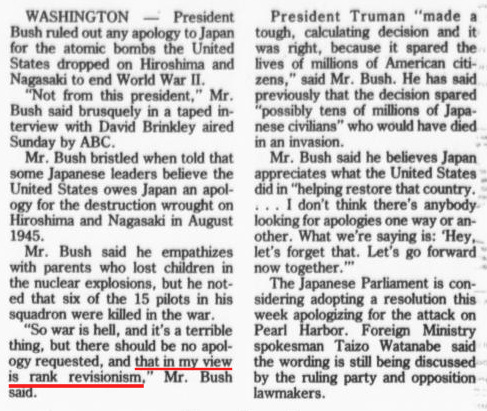“Don’t write anything you can phone. Don’t phone anything you can talk. Don’t talk anything you can whisper. Don’t whisper anything you can smile. Don’t smile anything you can nod. Don’t nod anything you can wink.”

A neo-Aristotelian analysis of Obama’s State of the Union speech might focus on how he builds credibility after a mid-term election gave significant traction to a Republican agenda. A Lakoffian critique would look at which dominant metaphors work to shape the framing of other issues, like how “the race to educate our kids,” “this is our sputnik moment,” and the theme of “winning the future” all contribute to a framework of competition. A Burkean cluster approach would organize key terms around frequency and intensity and extract an analysis from there.
Here’s what that would look like with regards to frequency:
But what about intensity? NPR did some reader-response analysis, asking over 4,000 people to describe the speech in 3 words. Here are the surprising results:
Um, I for one did not see that coming. Granted, there are very few jokes made in State of the Union speeches, so one could argue that those that do make it in are bound to stand out. But nevertheless, I find this surprising.
What can we glean from this data about the impact of Obama’s speech? What can we suggest about the role of sarcasm in this situation? What rhetorical methods do we have which can account for this anomaly?
To make matters perhaps even more interesting, here is the same data broken down into party-affiliations:
I’ll be curious to hear some of your responses to this data.
————————————————————————
** I would be remiss if I didn’t point out that Obama missed an opportunity to point out the plight of salmon. All five species of Pacific salmon are endangered: Chinook, Chum, Coho, Pink, and Sockeye. It was not long ago at all that this now-endangered species thrived. From Derrick Jensen, a staunch defender of salmon and all wild life:
At one time the Columbia River Basin was home to the greatest runs of salmon on earth. In 1839 Elkanah Walker wrote in his diary, “It is astonishing the number of salmon which ascend the Columbia yearly and the quantity taken by the Indians. . . .” He continued, “It is an interesting sight to see them pass a rapid. The number was so great that there were hundreds constantly out of the water.” In 1930, Idaho’s Coeur d’Alene Press wrote, “Millions of chinook salmon today lashed into whiteness the waters of northwest streams as they battled thru the rapids. . . .” The article went on to say that “the scene is the same in every northwest river.” Spokane, Washington’s Spokesman-Review noted that at Kettle Falls, “the silver horde was attacking the falls at a rate of from 400 to 600 an hour.”
Now the salmon are gone. To serve commerce our culture dammed the rivers of the Columbia River Basin. People at the time–beginning in the 1930s–knew dams would destroy salmon. Local groups and individuals–including those who knew salmon most intimately, the Indians–fought against the federal government and the river industries, but dams were built and now the fight is becoming even more desperate, as nine out of ten major salmon species in the Northwest and California are extinct or on the verge.
NPR has officially won my “Rhetorician of the Week” award, for their new project: “Fighting Words.” Here’s how they describe it:
Check out this video for a sixty-second overview of the project:
NPR is doing great work here in helping cultivate civic rhetorical literacy, simply by providing the data needed for analysis. The one critique that I believe is worth mentioning, however, is the title of the project: Fighting Words. It seems they’ve fallen into that well-worn groove of envisioning argument and debate only in terms of WAR.
Lakoff and Johnson’s Metaphors We Live By reveals just how deeply this association has ingrained itself into our everyday expressions and thought patterns; here are just a few examples they list:
Your claims are indefensible.
He attacked every weak point in my argument.
His criticisms were right on target.
I demolished his argument.
I’ve never won an argument with him.
He shot down all of my arguments.
The language we use to frame the practice and process of debate significantly impacts how think about and respond to it. NPR is taking the same route that the lame-stream media takes in trying to boost their ratings: amplify the sense of contentiousness to get viewers to tune in.
Every time I hear these metaphoric frames of aggression and war invoked without a thought given to their long-term consequences, I think of all the different ways we might envision argument. As Lakoff and Johnson so eloquently put it:
Imagine a culture where an argument is viewed as a dance, the participants are seen as performers, and the goal is to perform in a balanced and aesthetically pleasing way. In such a culture, people would view arguments differently, experience them differently, carry them out differently, and talk about them differently.
“When Confucius was asked what would be the first thing he would do if he were to lead the state—a never-to-be-fulfilled dream—he said, Rectify the language. This is wise. This is subtle. As societies grow decadent, the language grows decadent, too. Words are used to disguise, not to illuminate, action: You liberate a city by destroying it. Words are used to confuse, so that at election time people will solemnly vote against their own interests. Finally, words must be so twisted as to justify an empire that has now ceased to exist, much less make sense. Is rectification of our system possible for us?”
With all the controversy about the building which will have Islamic prayers on Park Place in New York City (yes, that was very carefully worded), I thought it very pertinent that I pass along this this article from The Huffington Post by Matt Sledge. In it he discusses the use of the term “Ground Zero Mosque” and how it is being used to draw people into a certain way of thinking. An interesting read, to say the least.
Our choice of words helps facilitate certain thoughts and empowers particular logics, while disciplining others. This is a foundational principle of rhetorical studies and probably nothing new to many of this blog’s readers.
Every once and awhile, though, I realize just how high the stakes really are.
The video below was found at WikiLeaks, “a website that publishes anonymous submissions and leaks of sensitive governmental, corporate, organizational, or religious documents, while attempting to preserve the anonymity and untraceability of its contributors. Within one year of its December 2006 launch, its database had grown to more than 1.2 million documents” (wikipedia entry). It is a classified US military video that shows the shooting of a dozen people in a suburb of Baghdad. Among the victims were two Reuters news staff. Two children are also involved.
Please take caution: this is raw footage, complete with the Army’s audio, of people being shot.
I deliberated on alternatives for “being shot” for quite some time. Perhaps–“this is raw footage of people being murdered.” Or “slayed.” Or “wrongly identified and accidentally fired upon.”
Slaughtered? Invalidated? Massacred? Killed? Rendered collateral damage?
Or, perhaps: engaged.
In the video you hear the military personnel saying, “We just engaged all eight individuals.”
It’s important to note that the video’s opening frame is a quote by Orwell’s 1946 essay, “Politics and the English Language”:
[Political language is] designed to make lies sound truthful and murder respectable, and to give an appearance of solidity to pure wind.
Elsewhere in that essay Orwell writes, “political speech and writing are largely the defense of the indefensible.” I think the assumed interpretation of this is meant to indicate the government’s defense to the public. This language is then, of course, picked up by the body politic, replicated by supporters to other members of the public. This language becomes the banal standard, the terms we use–whether we’re for, against, or indifferent–to communicate.
But I wonder if we might think about how we use smokescreen language like this on ourselves, to psychologically shield ourselves from what we know is “indefensible,” which could be translated here as “unconscionable.”
So when the soldier in this video says, “I’m just trying to find targets again,” we could say it’s because it’s what allows him “to do his job” (another phrase of justification, used to pass accountability to another realm). Can you imagine it rephrased?
“I’m just trying to find a breathing body that has hopes and dreams like you and I to send a piece of metal through so that his blood will mix with the sand.”
This isn’t a piece about placing praise or blame on soldiers. This isn’t the forum for such a critique; and having known several veterans of Iraq, I would never hastily condemn the individual without knowing more. (For instance, what if the person doing the shooting ultimately found such an act reprehensible and leaked the video himself in a courageous attempt to right a wrong?)
This is a forum about language and its consequences.
Military speak is an extreme example of language that shields its users from discussing the indefensible. It’s easy for us to assume that we are separate from those who must use linguistic mirrors to either do what they’re told or justify daily action. But if you find this use of language chilling in its brutal efficacy, perhaps you’re willing to try something…
Let’s search for all those terms that displace our own accountability. Let’s identify them, interrogate them, and reframe them for the better. And let’s do it in a public forum.
Habitat loss and endangered species perform the same function that collateral damage and enhanced interrogation techniques do. They are terms that permit–indeed facilitate–thinking that directs us away from a frame of accountability.
For those that think it’s a stretch to align environmental atrocity with the atrocity in the video below, you might first question how the two aggressions, rationale and even people behind those acts are similar. The connections are staggering.
And so I’m calling on all rhetoricians, language-lovers, and wordsmiths to raise the stakes a bit, and using the emotion generated by the video below, to take ownership of language in such a way that it becomes infused with accountability and agency.
I just opened a letter from one of my credit card companies and was immediately put on guard: something just seemed different.

Unlike many of my friends (but perhaps not those who consider themselves professional rhetoricians) I’m in the habit of actually reading credit card policy updates and other fine-print heavy documents, like contracts, nutritional notes–you know–“enlarged to show texture”-type stuff. It certainly isn’t born out of some rigid sense of responsibility; it’s much more of a perverse delight in how much communication is swept under the proverbial rug. (If you’d like to catch this bug, I suggest you spend sometime at Mouse Print, a site dedicated to exposing the fine-strings-attached in 8 pt. font.)
So when I read through this letter I was tickled (not sure if that’s the right word) to find out that part of its purpose was about, yep, fine print.
One of the requirements included in the “Credit Card Accountability, Responsibility, and Disclosure Act,” which was signed into law by President Obama on May 22, 2009, is a redesigning of billing statements.
One of the main changes? Font size. After years of years the fine print, this one looked almost childish with it massive, clumsy 12-pt font!

Although it’s not the language that is used in the legislation, the Obama administration has been promoting a rhetoric of “Plain Language in Plain Site.”
Credit card contract terms will be disclosed in language that consumers can see and understand so they can avoid unnecessary costs and manage their finances … These disclosures will help consumers make informed choices about using the right financial products and managing their own financial needs.
Something like this is very easy to make fun of when touted as “real reform,” but I’m in a generous mood and right now I’m of the persuasion that this is a step in the right direction. For instance, who is really going to take the time to read through something like this and connect the dots:

Don’t those call-out boxes, bolded terms, and line-breaks just naturally guide your eye?! They basically interpret the information for you! Unless you’re a fine-print-freak (like moi), this statement probably goes right in the recycling bin. (Which is probably why people are shocked to discovered their rates get jacked every year without them really being aware.)
Right now my class and I are finishing up a project on data visualization, so I’m thinking about how much our credit/debt-lifestyles would change with some powerful graphs that displayed the same information in compelling ways. For example, what if you were given a graph that compared your payment to the amount of time it would take for you to get out of debt? Take data like this …

… and render it visually persuasive? What if we had info-graphic specialists that worked in conjunction with consumer protection agencies to present this information in such a way that actually made people cognizant of where their money was going?
Perhaps something like this, but even better?

(Dennis Campbell: Center for Plain Language Symposium)
What if we started to radically reimagine the use of info-graphics and data visualization to improve daily practice toward something more sane and sustainable?
 timeline of when oil actually went into mainstream production for automobiles along side a graph that showed how much is left in the earth? Maybe include how long it took to actually make the s**t?
timeline of when oil actually went into mainstream production for automobiles along side a graph that showed how much is left in the earth? Maybe include how long it took to actually make the s**t?And what if we didn’t wait for anyone else to start doing this? What if we took it upon ourselves to inform others through creative measures? What if we bettered our communities through something as simple as a compelling graphic? What if we worked together to do it?
Oh, my goodness. You must check out this site: http://fantasyscotus.net/
It’s Supreme Court Fantasy League–you know, kinda like fantasy football, but with the supreme court. My favorite thing on that site, would have to be on the rules page. And I quote:
NB. Because this is the inaugural season of FantasySCOTUS.net, the rules may be subject to change. But as avid followers of the Supreme Court, you should have no problem with rules that are modified frequently.
Ha. It makes me chuckle. It also encourages me that some people care so much about the Supreme Court that they’d make a game out of it. I wonder if students would get into this. It says it’s free for students and teachers. I’m sure it would serve as a good exercise for someone.
via Blogora
Okay, so how many of you out there have seen this footage by New Left Media at a Sarah Palin book signing?
This was filmed November 20th, 2009 at a Borders down the street from me. For the record, I don’t recall seeing this long line of people. Perhaps I just wasn’t out and about in that area that day. It is likely.
Anywho, I want to talk about this video, specifically, because this kind of representation makes me nervous. Or uncomfortable. I see the humor in it. I see the idea that these particular interviewees don’t appear to give insightful answers about the questions they are asked when they are supposed to be very strong supporters of this person and these issues. Yes, irony. Wonderful. If it were on Jon Stewart, I’d laugh. But, it’s not.
My issue is that it comes from New Left Media, which is not about comedy. They are about supporting issues that are traditionally liberal and my uncomfortableness is not with the organization specifically; it’s that this video uses techniques that are so polarizing. The anti-Palins will point, laugh, and say that was their point all along. Pro-Palins will say that the video is edited to cater to the anti-Palins and doesn’t reflect a true Palin audience, even though New Left Media adamantly denies “cherry picking.” They went on to say:
As for accusations of cherry picking, which are commonly thrown at interview-based videos, it simply isn’t what we did. We interviewed only a few more people than ended up in the video, not hundreds, and what was cut was done for time purposes. The people were selected at random–some offered to be interviewed–and we were only there for 90 mins (it gets dark early and fast in Ohio right now). What didn’t make it into the video was just more footage of people talking about taxes/spending, drilling, and abortion, and we constructed blocks in the piece to represent those issues. Of course the piece was edited to be entertaining (this is YouTube, after all, where the currency is cat videos) but we don’t believe we misrepresented the attitudes of the people at that signing in any way.
I question the positive impact that this video has. Yes, it has had an effect of some kind–it has more than a million views and more than twenty-one thousand comments, but reading those comments is painful. It’s a major flame war. This kind of framing doesn’t foster dialogue or conversation where opposing groups can speak thoughtfully about a subject. It degrades and mocks one group, which automatically puts them on the defense.
I will say this, the video is clever. It is, but I wonder how the video might have changed if the interviewer asked specific questions about specific policies. I wonder if there might have been more detailed answers or at least made the interviewee start thinking about her specific policies. Of course, don’t me wrong, there are some just plain atrocious answers in there (seriously, Russia across the street?), but by marking the interviewees as idiotic without responding to their actual concerns, then no real progress is made. No one feels heard or understood, which does not make them more willing to concede to the other person’s point.
Perhaps, I’m just an idealist. Or maybe I’m a bit too tender-hearted, but I believe that real, intelligent, thoughtful conversations are possible and that we all can disagree with compassion. That’s part of what Harlot‘s about. That’s part of what I want to support.
My ideas on this aren’t solidified yet (because I also understand that witty commentary–no matter how offensive–also has its place) and I doubt that I’ll ever have an absolutely concrete stance, but I do wish that I’d have the opportunity to see whether a more compassionate and empathetic conversation would have a positive impact. At the moment, there just aren’t many of those types conversations happening.
My Thanksgiving weekend several weeks ago took an interesting turn when I read in the newspaper that one of America’s oldest Protestant church apologized to Native Americans–for massacring and displacing them:
We consumed your resources, dehumanized your people and disregarded your culture, along with your dreams, hopes, and great love for this land…With pain, we the Collegiate Church, remember our part in these events.
At first I was simply intrigued by the skillful circumvention of that devilishly accurate term: genocide. But then I found myself enthralled by the questions this curious genre raises: Under what circumstances can one apologize for actions done by others? Especially those done several hundred years ago? What are the differences between an apology from a collective and one from an individual? What are the consequences of an apology that deals with crimes against humanity? And among all the atrocious acts that have been committed/commissioned by governments, how do you choose which ones get an official apology?
While this particular instance hit me hard (perhaps because Thanksgiving is such a perversely appropriate time to contemplate apologies), I must confess that I had already been thinking about the genre because of all the large-scale, national apologies we saw in 2009:
That last bill will probably die, however, because its language has managed to sneak in elsewhere. Just last week the Wall Street Journal reported that, “Buried in the billions of dollars of spending on new weapons and other items in the 2010 defense appropriations bill is a little-noticed expression of regret over how the U.S. had in the past used its power. The bill contains an ‘apology to Native Peoples of the United States.'” How apropos. In our defense budget documentation is the sentence, “the United States, acting through Congress…recognizes that there have been years of official depredations, ill-conceived policies, and the breaking of covenants by the Federal Government regarding Indian tribes.” **

(Now, I don’t think anyone with a shred of integrity can suggest that the “policies” of the government were simply “ill-conceived,” but that rant is for another day.)
So what’s being communicated here? What is the government trying to persuade us of? What’s being accomplished with this quickly developing genre? And what’s the best way to leverage these apologies for more (significant, noble) change? For fear of a long tirade I’ll hold my breath on this until I hear some of you chime in, but these are important questions to ask, I think, especially because the “official apology” is only going to increase, and because it is a conspicuous shift in US policy.
I remember, for example, being 11 years old and hearing Bush Sr. repeatedly claim that he will never apologize for America.

This stance was actually a key component in how Bush constructed a staunchly American ethos when running for President:
This post is getting a tad big, so I’m going to continue it later this week; it’s simply too intriguing of a topic to stop here.
My apologies for any inconvenience this may cause.
————————————————————————————————-
** If you’re like me, you’re probably stewing on whether or not an apology like this could be used in the legal system against the United States. After all, if the government acknowledges broken treaties (33% of the landmass is still held illegally, actually, because many broken treaties never had their legal-standing fully dissolved post-population removal) and apologizes for this, it could have massive legal consequences. But don’t worry–they thought about that ahead of time. Included in the document is some fine print: “[This apology] isn’t intended to support any lawsuit claims against the government.”
Hmm, looks like the US learned something from their official apology to Hawaiians for invading the country and exploiting its people and resources. Hawaii’s Supreme Court is using the apology as evidence for ceding 1.2 million acres of land away from US control.
This is the first time, from what I can gather, that an apology is being used as legal evidence. The consequences of this case could be huge–and the US knows that. Here’s a snippet from the Wall Street Journal article that’s linked above:
Upholding the Hawaii Supreme Court’s ruling could discourage Congress from making similar apologies for other historic wrongs, the Justice Department warned, adding that the Apology Resolution was only symbolic.
A year after the Apology Resolution, the [Office of Hawaiian Affairs] filed suit..leading to the high-court case. “The Western concept of land ownership was very foreign to Hawaiians,” says Hawaiian Affairs Administrator Clyde Namuo. In traditional culture, “property is not a commodity that is bought and sold but it is used to benefit people who live and reside on the land.”